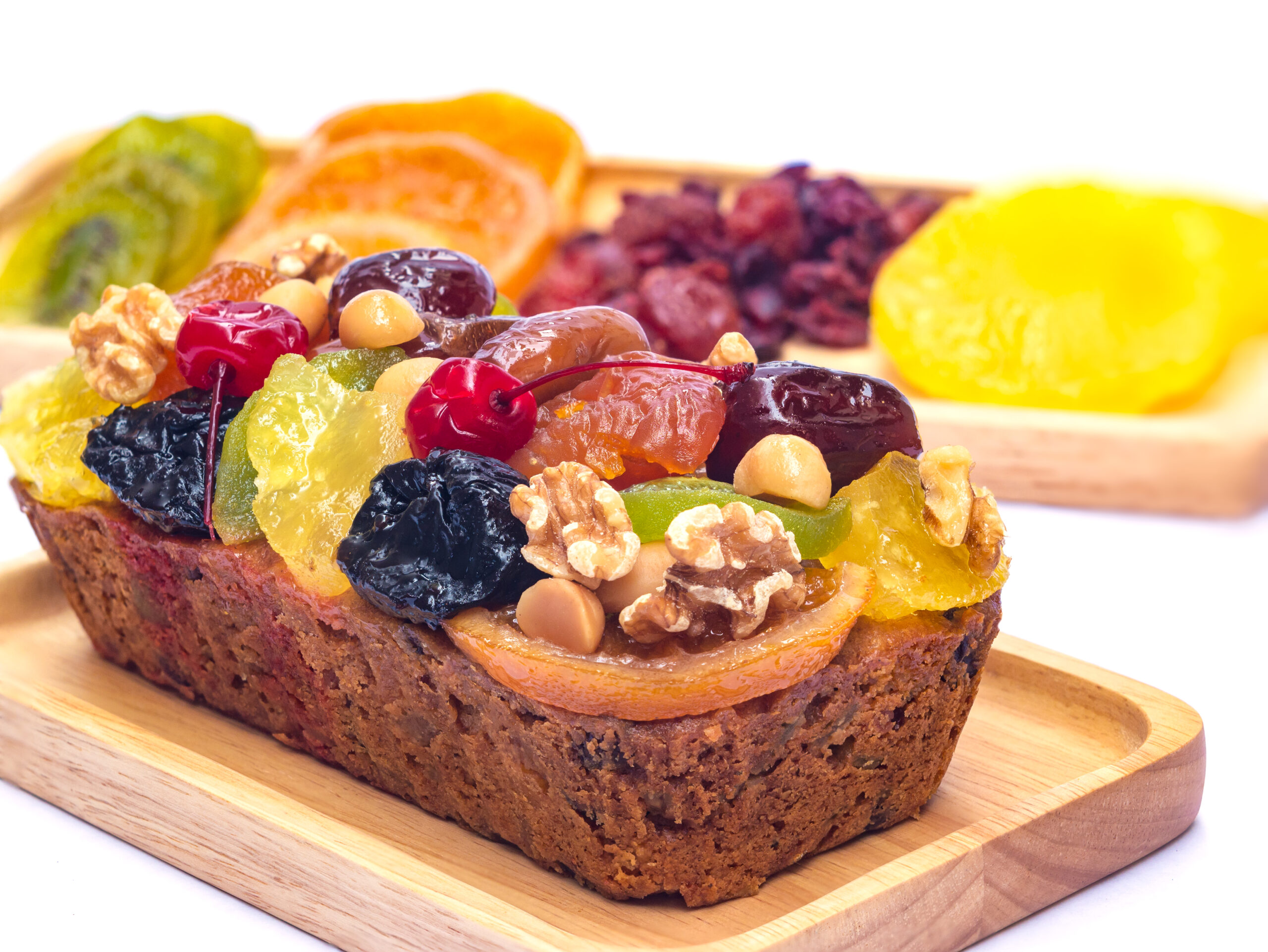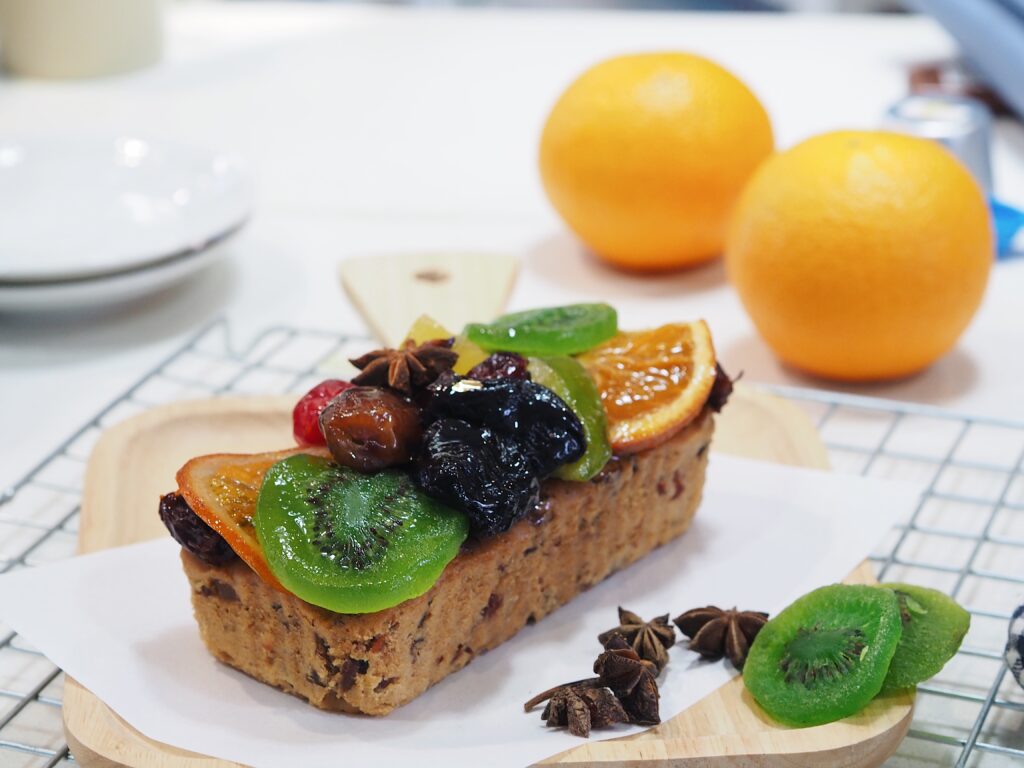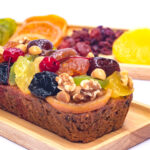The Timeless (and Sometimes Timeless) Tale of Fruitcake
- 17 November 2025
The Timeless (and Sometimes Timeless) Tale of Fruitcake
The Cake That Refuses to Die
Fruitcake has certainly earned its reputation for lasting forever. Evidence of its staying power includes:
- A cake baked in 1878, which holds the title for the oldest known existing fruitcake.
- The fruitcake left behind in Antarctica by explorer Robert Falcon Scott in 1910.
- The same cake exchanged between two New York friends since the late 1950s.
Amazingly, people have actually tasted these ancient cakes and survived, meaning they remain edible for years. The secret to its near-immortality is a trifecta of sugar, low-moisture ingredients, and high-proof spirits, making it one of the longest-lasting foods globally.
The World’s Oldest Edible Fruitcake: A Century Under Antarctic Ice
An extraordinary discovery was made at Cape Adare, Antarctica, where a 100-year-old fruitcake was found in a historical hut by the Antarctic Heritage Trust (New Zealand).
The cake, a product of the famous brand Huntley & Palmers, was in surprisingly excellent condition and still had a noticeable scent. It was left behind during the renowned Terra Nova Expedition (1910–1913) led by explorer Robert Falcon Scott and his team.
The finding perfectly illustrates the legendary longevity of fruitcake. Its high content of fat and sugar made it an ideal, calorie-dense food for surviving the planet’s most extreme weather conditions. The fruitcake was a cherished dietary staple in British society and was even supplied to soldiers during the World Wars.
Historians highlight that this discovery showcases how the frigid Antarctic climate acts as a perfect preservative, safeguarding historical artifacts intact. The find underscores the critical need for conserving Antarctica’s fragile environment to protect these objects that have been “time-capsuled” beneath the ice. Following a thorough inspection, the fruitcake and all other recovered items will be carefully returned to their original locations within the hut.
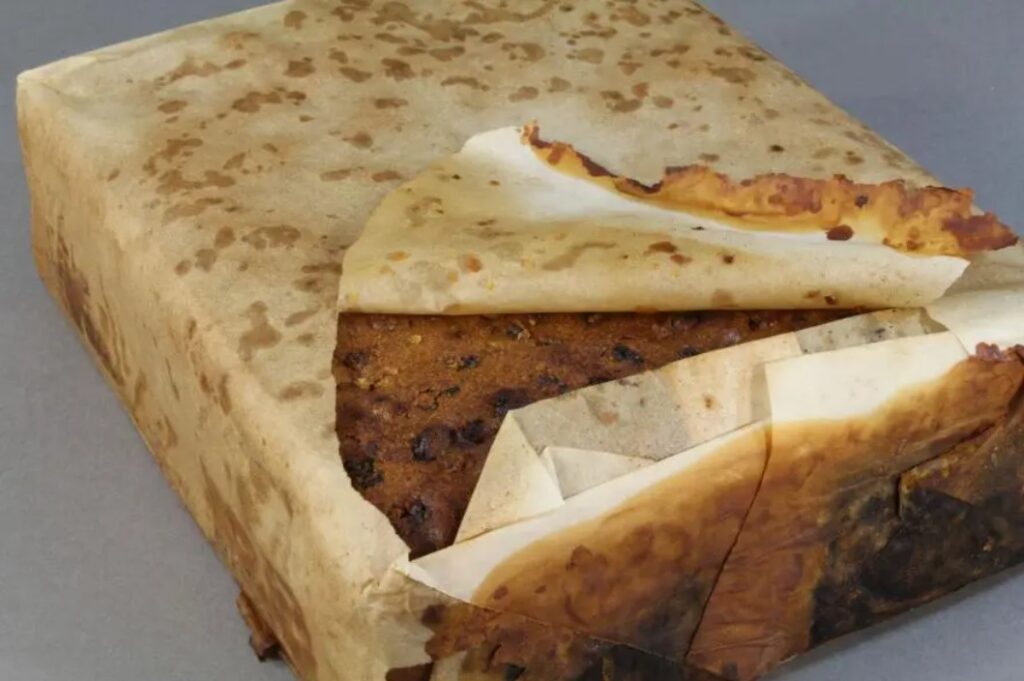

From Roman Energy Bar to Modern Dessert
The fruitcake is an ancient treat. The oldest versions were essentially an energy bar created by the Romans to fuel their soldiers, mashed together from barley, honey, wine, and dried fruit.
The modern fruitcake—a moist, leavened dessert filled with fruit and nuts—emerged in Europe during the early Middle Ages. Spices like cinnamon, cloves, and nutmeg symbolized culinary sophistication, and they soon joined fruit in various savory dishes and, eventually, sweet breads and cakes. This led to many cuisines developing their own fruity baked goods, which evolved into today’s fruitcake.
- European Styles are closer to the medieval fruited bread; the most common are Stollen and Panettone.
- British and American versions are much more cake-like, with the British iteration sometimes featuring a lavish marzipan icing layer.
“Sugar” The Key to American Popularity
Fruitcakes arrived in America with European colonists. This surge in immigration coincided with an influx of cheap sugar from the Caribbean. Sugar proved vital for preserving fruit across seasons, most notably through candying—a process where fruit is boiled in sugar syrup and allowed to dry. This technique allowed colonists to save their summer harvest for Christmas baking, establishing the fruitcake as a popular holiday dessert.
The Art of Seasoning
In the era before refrigeration, a dessert with a long shelf life was highly prized. True aficionados say the best fruitcakes must be matured, or “seasoned,” for at least three months before serving.
Seasoning involves periodically brushing the cake with a distilled spirit (traditionally brandy, but rum or bourbon are also popular) before wrapping it up and storing it in a cool, dark place. This process not only deepens the flavor but also makes the cake easier to slice.
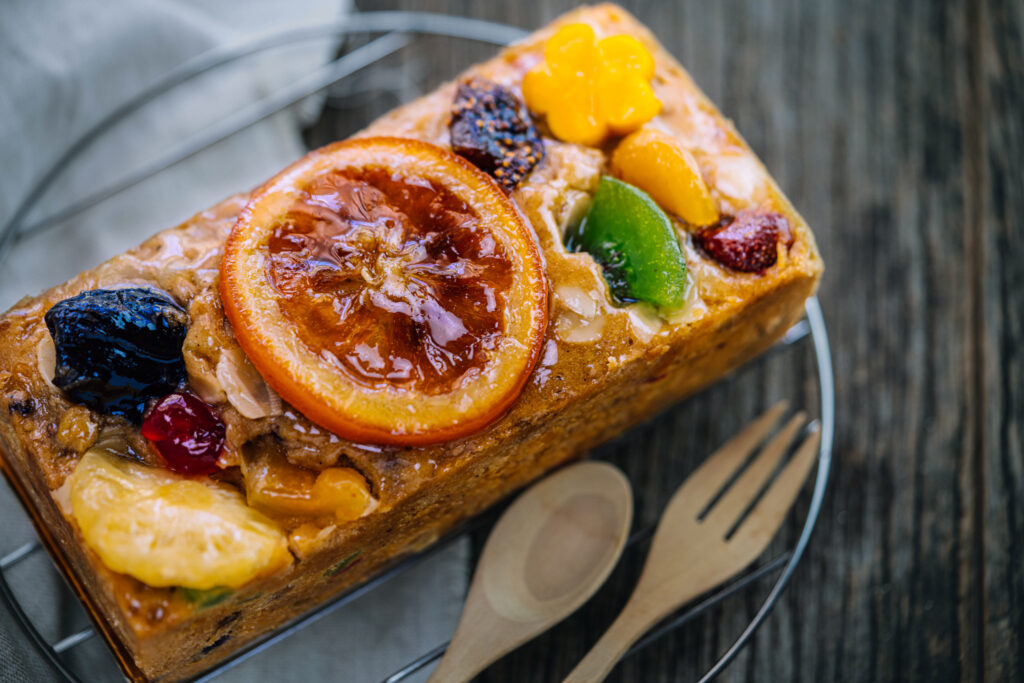
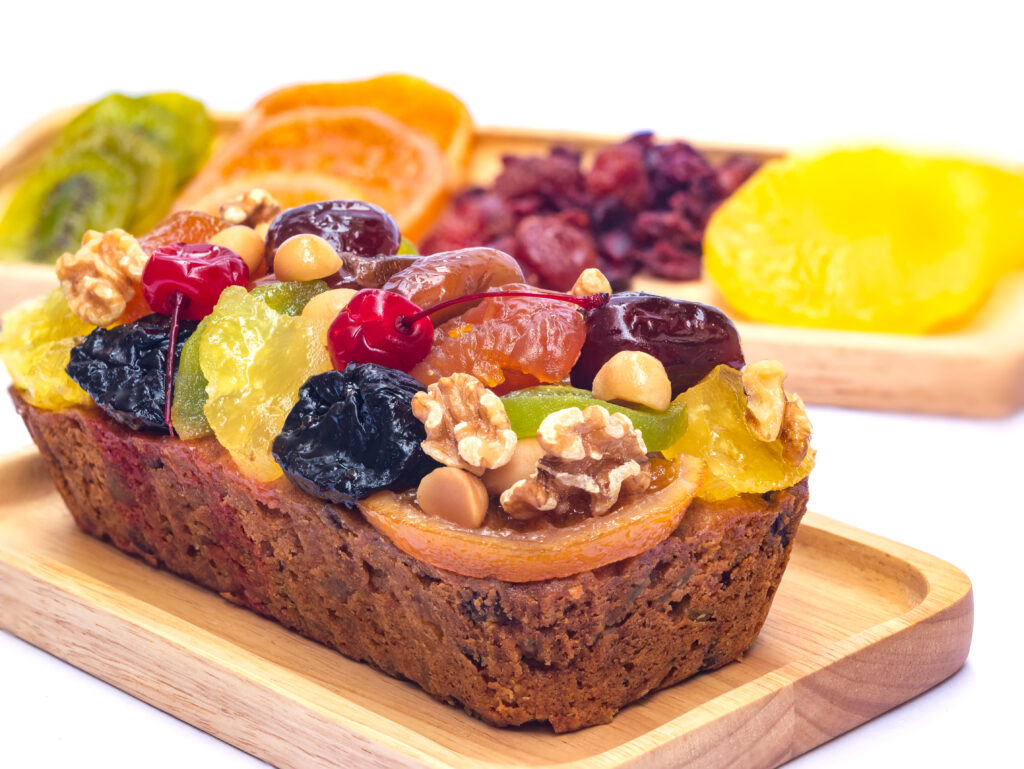
The U.S. Post Office: Fruitcake’s Biggest Ally
The cake’s popularity in America owes partial credit to the U.S. Post Office. The introduction of Rural Free Delivery (1896) and Parcel Post (1913) fueled an explosion in mail-order foods. Given its dense texture and long shelf life, the fruitcake was perfectly suited for shipping. This led to the rise of famous companies like Claxton’s and Collin Street, and by the early 1900s, mailrooms were routinely packed with fruitcake tins.
From Holiday Must-Have to Least Favorite Gift
The fruitcake enjoyed high esteem well into the 1950s, when it was widely considered a “holiday must.” However, public opinion shifted dramatically by 1989, when a Mastercard survey found it was the least favorite gift for 75% of those polled.
Despite the jokes and the haters, the fruitcake remains a robust American tradition. The website Serious Eats confirms that Americans still buy over 2 million fruitcakes each year.
What are your thoughts on fruitcake? Are you one of the 2 million buyers, or do you prefer to keep the jokes going?
Regional Variations of the Fruitcake
The classic holiday fruitcake takes on unique and delicious forms across different countries
Dundee Cake (Scotland)
The modern Dundee Cake was popularized in the 19th century by a Scottish marmalade company. Legend has it that the cake’s distinct look originated because Mary Queen of Scots didn’t like candied cherries.
- Key Ingredients: Always features currants, sultanas, and almonds. Sometimes includes a touch of whisky and zests.
- Appearance & Tradition: It is famous for its simple but elegant concentric design made entirely of almonds on top. This cake was even marketed in India until 1980. It’s often enjoyed with tea, a ritual reportedly favored by Queen Elizabeth herself.

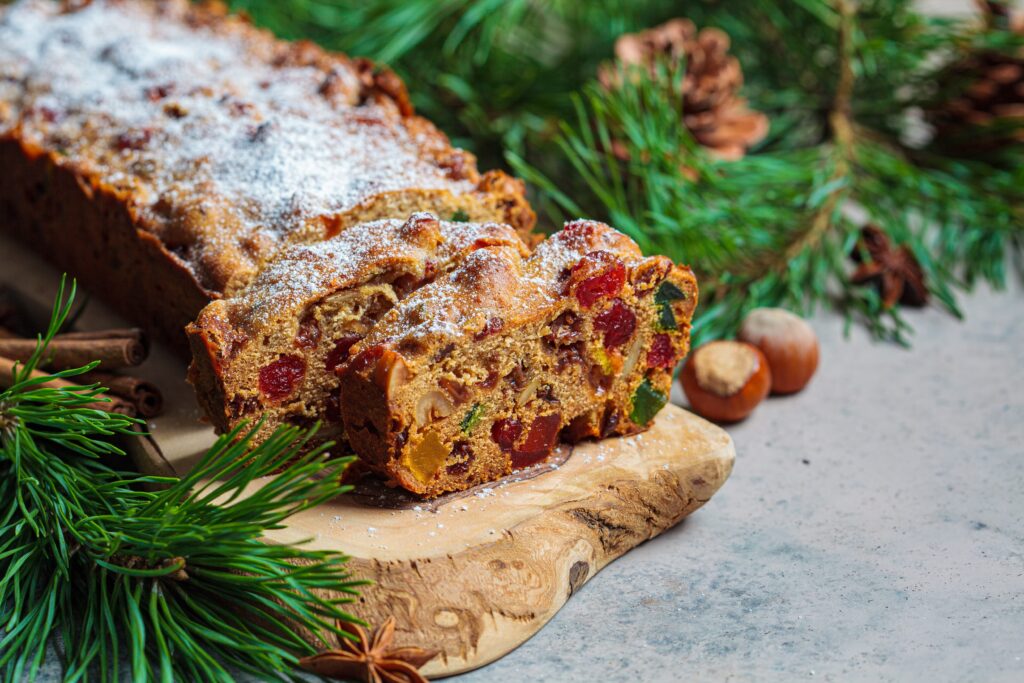
Allahabadi Cake (India)
India offers its own unique take on the fruitcake, named after the city of Allahabad where the famous Bushy’s bakery is located.
- Key Ingredients: Uses local items like maida flour and petha (winter melon candy). It also incorporates marmalade, rum, nuts, and exotic spices such as ginger, mace, cinnamon, and fennel.
- The Cult Following: This cake has a loyal following. Customers, even those traveling from abroad, will deliver their own specific ingredients to the Aslam family (Bushy’s owners) and queue for hours to ensure their cake is hand-mixed for 45 minutes and perfectly baked.
Panettone (Italy)
Unlike its cake cousins, Italy’s Panettone is essentially a sweet loaf of bread.
- Process & Texture: It is shaped into a distinctive high dome (12-15cm for a 1kg cake), which requires several days of proofing and about 20 hours of raising the dough before baking. The result is a uniquely light and fluffy bread with non-soaked dried and candied fruit and zest.
- Serving: Panettone is typically served with sweet hot drinks, a sweet wine, or topped with a mascarpone-based cream or a light custard called zabaione.

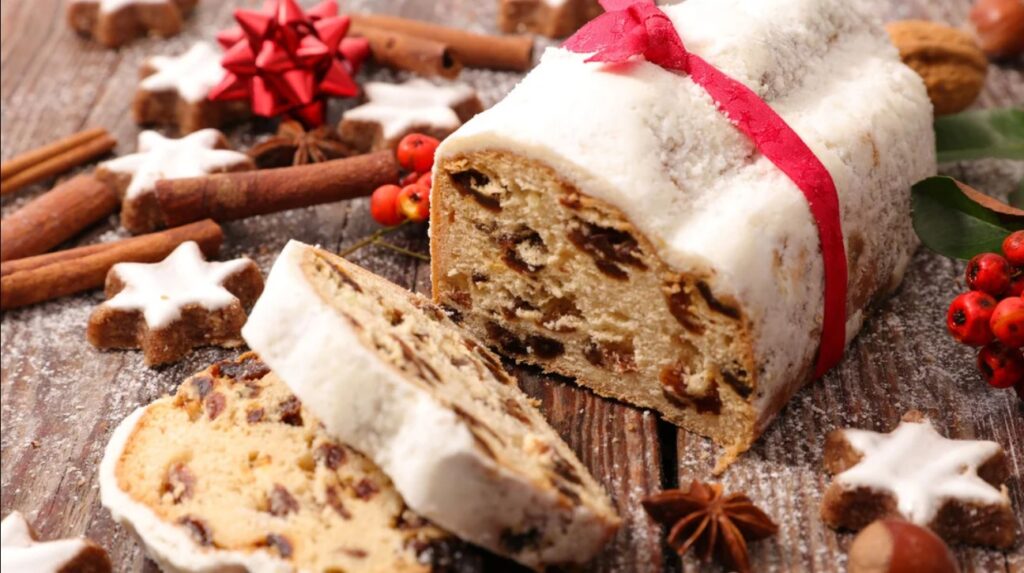
Stollen (Germany)
The German Stollen is a much denser fruit bread often enriched with rum added directly to the dough.
- Process & Preservation: To achieve a moist texture and extend its shelf life, the bread is immediately slathered in melted butter and rolled in sugar after baking.
- Ingredients: It’s loaded with raisins, candied fruits and zests, marzipan, and almonds, which may be marinated in rum or brandy, along with spices like cardamom and cinnamon.
- Tradition: The city of Dresden hosts a yearly Stollenfest, where a giant three-to-four-ton Stollen is served to raise money for charity.
Resources : theconversation, tatlerasia, ngthai
